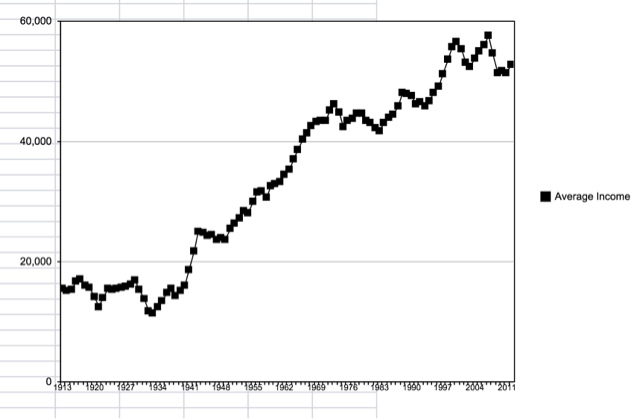- by New Deal democrat
Month over month August data included a rise in real retail sales (and July revised positively), a decline in consumer sentiment, an increase in the PPI, a decrease in import and export prices, and falling business and wholesale inventories.
Let's start this edition of the high frequency weekly indicators by looking at the real economic version of the Dow signal, i.e., comparing manufacturing with transport:
Steel production from the American Iron and Steel Institute
- +0.9% w/w
- +6.9% YoY
Steel production over the last several years has been, and appears to still be, in a decelerating uptrend. It had been negative YoY for last 3 weeks, but turned positive this week.
Transport
Railroad transport from the AAR
- +6000 carloads up +2.2% YoY
- +7200 carloads or +4.7% ex-coal
- +14,400 or +6.7% intermodal units
- +20,500 or +4.2% YoY total loads
- Harpex up +1 to 406
- Baltic Dry Index up +284 to 1636
Employment metrics
Initial jobless claims
- 292,000 down -21,000
- 4 week average 321,250 down -7250
The American Staffing Association Index was steady at 97. It is up +5.5% YoY
Tax Withholding
- $67.3 B for the first 8 days of September vs. $60.4 B last year, up +6.9 B or +11.5%
- $146.3 B for the last 20 reporting days vs. $129.4 B last year, up +16.9 B or +13.1%
Initial claims made a new 6 year low this past week, due to state reporting glitches. Next week's numbers will average out to the real story. In any event, they remain firmly in a normal expansionary mode. Like each of the last three years that this same, a good, downside breakout has occurred.
Temporary staffing had been flat to negative YoY in spring, but has broken out positively in the last two months. Tax withholding, after a relatively poor August, is again posting better comparisons.
Consumer spending
- ICSC +1.5% w/w +2.3% YoY
- Johnson Redbook +4.6% YoY
- Gallup daily consumer spending 14 day average at $87 up $17 YoY
Oil prices and usage
- Oil down -2.32 to $108.21 w/w
- Gas down -$0.02 at $3.59 w/w
- Usage 4 week average YoY down -0.1%
Interest rates and credit spreads
- 5.49% BAA corporate bonds up +0.09%
- 2.92% 10 year treasury bonds up +0.16%
- 2.57% credit spread between corporates and treasuries down -0.07%
Housing metrics
Mortgage applications from the Mortgage Bankers Association:
- -3% w/w purchase applications
- +7% YoY purchase applications
- -20% w/w refinance applications!
Housing prices
- YoY this week +10.6%
Real estate loans, from the FRB H8 report:
- -2 or -0.1% w/w
- -0.1% YoY
- +1.2% from its bottom
Money supply
M1
- +0.5% w/w
- -0.1% m/m
- +8.7% YoY Real M1
M2
- +0.1% w/w
- +0.1% m/m
- +4.6% YoY Real M2
Bank lending rates
- 0.244 TED spread up +0.004% w/w
- 0.182 LIBOR down -0.002 w/w
JoC ECRI Commodity prices
- down -0.23 to 123.27 w/w
- -1.10 YoY
This week was generally positive, with the same concerns about the long leading indicators as I've had for the past several months. Interest rates are negative, mortgage applications and real estate loans have turned negative (although purchase mortgage applications are still steadily positive YoY), and money supply is decelerating although still positive.
The shorter leading indicators of initial jobless claims and interest rate spreads are positive, although we need to see how jobless claims are revised next week. Temporary employment has turned strongly positive in the last two months. The oil choke collar is engaged but has eased off a bit, although commodities have turned negative.
The coincident indicators look like they have broken out positively. Rail traffic, which had been a real concern, has broken to the upside strongly for several weeks in a row, as has shipping. Steel production broke out to the upside this week as well. Consumer spending is holding up reasonably well. Bank lending rates are at or near their lows. Tax withholding has also improved moderately in the last couple of weeks. House prices remain strongly positive.
Barring Debt Ceiling Debacle part Deux in Washington, or a further oil price shock, the economy appears ready to pick up steam again for the rest of the year. I remain much more cautious about 2014.
Have a nice weekend.










































